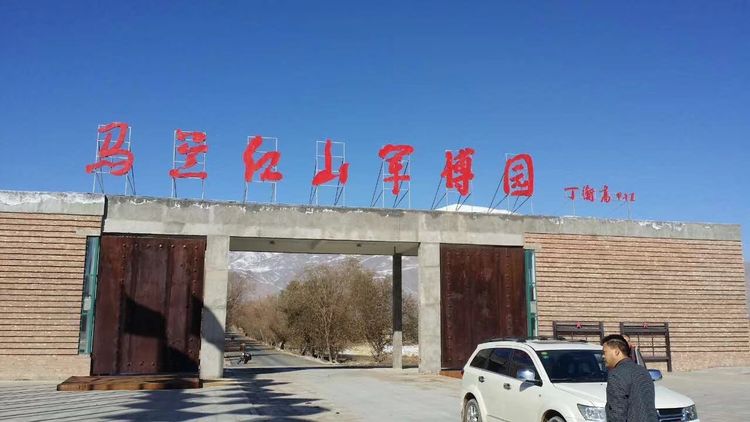Xinjiang, known as the Western Regions in ancient times, is the administrative region with the largest land area in China and an area with many beautiful scenery. However, just nearly 60 years ago, a group of secret but great people did an earth-shattering event here, and this incident also made Chinese really straighten his waist.

In the southeast of Xinjiang's Tarim Basin, the far edge of the eastern Taklamakan Desert lies one of China's most mysterious regions------ Lop Nur. It is named the Sea of Death and is also the world's famous center of drought. It was not far from Lop Nur that the group built a once little-known secret military base, the Maran base. So what are they doing in this deserted and dangerous place?
We jump back in time to more than sixty years ago, when the Korean War was still in progress, the United States repeatedly threatened to use nuclear weapons to strike China in all directions, although this is a kind of intimidation, but it is like a sharp sword, hanging above your head all the time.
Because of this incident, it also made the country realize that if it wants to oppose nuclear weapons, it must first possess nuclear weapons, and this has also strengthened China's determination to step up the progress of the development of atomic bombs. In 1963, China secretly mobilized a special task force to Malan Village, a small village that was little known in Xinjiang at the time. Since then, this little-known small place has been transformed into a military stronghold with tens of thousands of troops assembled. In the days that followed, these great soldiers and researchers who were hidden in anonymity set up from scratch in the vast desert at the now-widely known Maran base. And this place has also been slowly expanded because the families of working researchers have moved in.
In the year of poverty and poverty, because of the lack of funds and important equipment, china's road to atomic bomb research and development was extremely arduous, not only relying on abacus for calculation, but even in a simple base, it was necessary to endure hunger. And at the most important stage of the development of nuclear weapons, as relations with the Soviet Union deteriorated, the Soviet side withdrew its experts and took away a large amount of valuable information, while the United States was also looking at the tiger, and under such circumstances, which were unfavorable to us in terms of timing and geographical advantages, our country became very difficult on the road to developing the atomic bomb.
Such harsh conditions are far inferior to those of Europe and the United States, which are well funded and have substantial resources. But we have people and. Even in this case, China's scientific researchers and fighters have relied on making Chinese stand up, breaking the European and American nuclear blackmail against China, and the strength of nuclear deterrence, and completing the design and manufacture of China's first atomic bomb in a very short period of time.
At 3 p.m. on October 16, 1964, over Lop Nur in Xinjiang, with an earth-shattering loud noise and explosion, China for the first time raised a huge fireball and mushroom cloud of nuclear fission into the Gobi Desert, and China's first atomic bomb was born. On June 17, 1967, shortly after the atomic bomb test, China once again successfully conducted the first hydrogen bomb test here, and at this point, china completely broke the nuclear monopoly and nuclear deterrence of the Western superpowers on china.
Since then, China has become the fifth country to possess nuclear weapons after the United States, the Soviet Union, Britain, and France. And these silent dedications and anonymous heroes in the Malan base have also made great contributions to China's international status, regional peace and stability and future prosperity and development. As a nuclear test base, the Maran base witnessed China's first atomic bomb explosion and the first hydrogen bomb explosion.
In the years that followed, more than forty nuclear tests were also conducted here. There were generations of anonymous battles at the Maran base until 29 July 1996, when our country announced a moratorium on nuclear testing. Lop Nur is a weather-beaten place that has witnessed China's dignity, and has also been marked as a permanent radiation contamination zone.
Today, the original desolate Malan base living area has long been transformed into a tree-lined, well-equipped tourist attraction, included in the national red tourism project, and this military base named after Malanhua, where countless people used to struggle, also quietly tells the hardships of the year and today's hard-won to every Chinese who comes to admire. The so-called predecessors planted trees, and the posterity cooled off. This Malan base, which stands in Lop Nur, is the best monument. Countless ancestors planted that big tree for China here and held up the nuclear umbrella.
Today, we have slowly learned about our country's little-known past from the declassified material, and these pasts are also a reminder of the hard-won happiness we have now. And now China, from that period of waste to be rebuilt, has long since come to the present that leads the Chinese nation to achieve great rejuvenation, and a new generation of young people have taken over the baton of their predecessors and helped us move towards a better future.